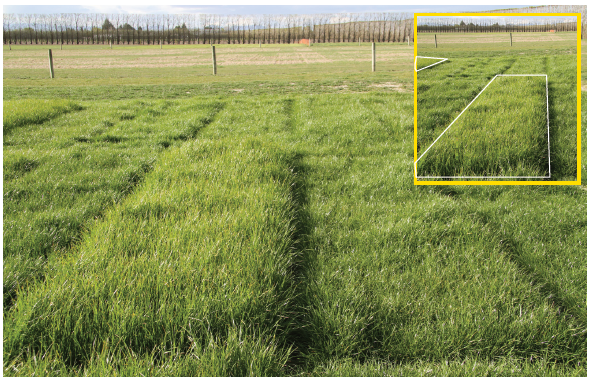Tyson is the earliest of early starters, adding more feed to the menu for hard-working mums during lambing and calving to power red meat breeding systems.
Plus it has strong yield year round, and NEA4 endophyte for better persistence.
Increased efficiency
With superb early growth, Tyson is arguably the most exciting perennial ryegrass the red meat sector has seen. It can feed breeding stock better through early lactation, meaning better lamb and calf growth, which in turn allows more lambs or calves to be finished off mum. This is a key goal for sheep and beef farmers because:
- Early lambs meet early export schedules typically at better prices.
- Weaning check is avoided (2 weeks lost LWG) plus lambs dress out better.
- Extra feed is freed up for other stock, e.g. ewes or trading cattle.
Start spring earlier


Heading date
Tyson is the earliest heading of any perennial ryegrass on the market, at -10 days. For improved feed quality through the remainder of the season, Tyson was carefully selected for low aftermath heading.
Capturing the benefit
While Tyson has the genetic potential to grow in early spring, it needs to be managed correctly to capture its full potential. Set stock in spring at < 1200-1300 kg DM/ha (or 3-4 cm pasture height) for single-bearing ewes, 1500-1600 kg DM/ha (or 4-5 cm height) for twin-bearing, or 1700+ kg DM/ha for triplet-bearing through lambing. Otherwise, Tyson won't have the leaves to capture sunlight to grow to its genetic potential, which is the science behind the saying ‘grass grows grass.’ Also as pasture height drops so does bite size, and although ewes take more bites, both their pasture intake, and lamb growth rate, drop.
Growth habit
Tyson is a fine leaved, densely tillered diploid perennial ryegrass suitable for both set stocking and rotational grazing.
Good insect protection
Tyson has been upgraded to NEA4 endophyte, providing good control of Argentine stem weevil, black beetle and pasture mealy bug, with no negative impacts on animal health. It is also available with Low endophyte.
Sowing Tyson

Possible additions
- Captain CS plantain at 2-4 kg/ha provides extra summer feed value, lasts 2-3 years.
- Redefine cocksfoot at 3-6 kg/ha provides extra summer feed in drier conditions.



